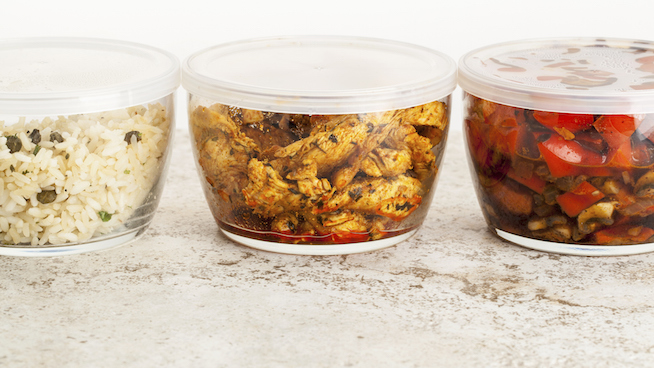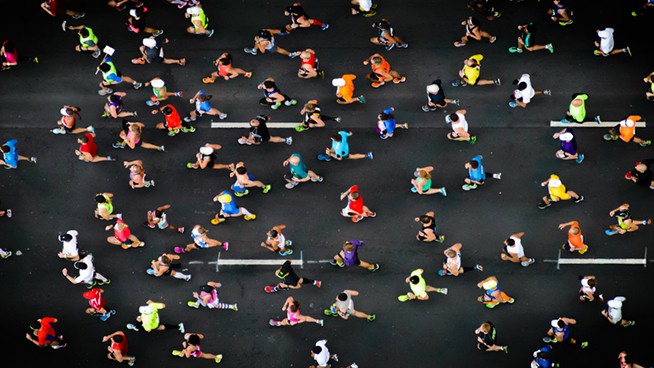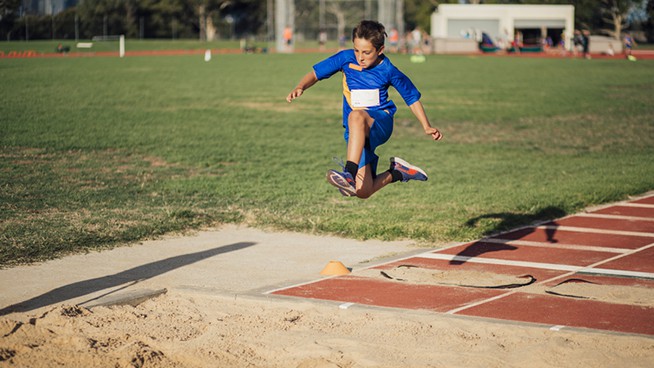Use Graduated Compression Socks to Enhance Muscle Recovery
Whether you’re speed training or hitting the track for some serious conditioning work, your legs can expect an intense workout. Such hardcore training is necessary for you to achieve your athletic goals. The unwelcome byproduct: muscle soreness. Lots of it.
You know the feeling. When you continually work your leg muscles—e.g., during interval runs—they become fatigued, leading to the burning sensation known as lactic acid buildup.
Wouldn’t it be great if you could beat the burn? Graduated compression socks might help you do so.
How they work
Graduated compression socks are tight around the ankles but gradually less constrictive up toward the knees. Incorporating strong elastics to support and stabilize the legs, ankles and feet, they can be worn both during and after a workout, depending on personal preference. Some athletes like the feel of compression wear during a training session, while others prefer to wear the socks after a tough workout.
Benefits
The main benefit is reduced muscle soreness. “Compression socks increase oxygen delivery to the muscles to accelerate lactic acid removal,” explains Dr. Cary Zinkin, spokesperson for the American Podiatric Medical Association. Less lactic acid means less inflammation, hence less soreness. According to a recent study, sprinters who wore compression socks felt less soreness after completing a series of 20-meter sprints and 10 bounds. Research also suggests that because of increased blood flow to the legs, athletes wearing compression socks can run for longer distances without muscle fatigue.
Another value: injury prevention. Dr. Zinkin says, “The thought is that compression socks can sometimes help prevent shin splints from occurring by providing more support to the leg muscles.”
Below, we break down some compression sock options so you can find the ones that suit you best.
STACK’s Pick
Best for odor prevention: Vitalsox [$35, vitalsox.com]
Silver ions are fused into the core of the sock’s fibers. The patented technology, referred to as Silver DryStat, acts as an anti-bacterial agent to inhibit bacterial growth and minimize unpleasant foot odors.
Runnersworld.com reviewed several brands of compression socks. Below are three that got top ratings:
Best for targeted relief: CW-X Compression Support Socks [$35, cw-x.com].
They offer isolated support for the calf and ankle.
Easiest to get on: 2XU Compression Race Socks [$55, 2xu.com].
Shorter and less tight than other brands yet still provide adequate support.
Best for sensitive feet: Under Armour Revenant [$20, underarmour.com].
Stretchy material allows for some flexibility; smooth seams aid in blister prevention.
Source: runnersworld.com
Photos: vitalsox.com
RECOMMENDED FOR YOU
MOST POPULAR
Use Graduated Compression Socks to Enhance Muscle Recovery
Whether you’re speed training or hitting the track for some serious conditioning work, your legs can expect an intense workout. Such hardcore training is necessary for you to achieve your athletic goals. The unwelcome byproduct: muscle soreness. Lots of it.
You know the feeling. When you continually work your leg muscles—e.g., during interval runs—they become fatigued, leading to the burning sensation known as lactic acid buildup.
Wouldn’t it be great if you could beat the burn? Graduated compression socks might help you do so.
How they work
Graduated compression socks are tight around the ankles but gradually less constrictive up toward the knees. Incorporating strong elastics to support and stabilize the legs, ankles and feet, they can be worn both during and after a workout, depending on personal preference. Some athletes like the feel of compression wear during a training session, while others prefer to wear the socks after a tough workout.
Benefits
The main benefit is reduced muscle soreness. “Compression socks increase oxygen delivery to the muscles to accelerate lactic acid removal,” explains Dr. Cary Zinkin, spokesperson for the American Podiatric Medical Association. Less lactic acid means less inflammation, hence less soreness. According to a recent study, sprinters who wore compression socks felt less soreness after completing a series of 20-meter sprints and 10 bounds. Research also suggests that because of increased blood flow to the legs, athletes wearing compression socks can run for longer distances without muscle fatigue.
Another value: injury prevention. Dr. Zinkin says, “The thought is that compression socks can sometimes help prevent shin splints from occurring by providing more support to the leg muscles.”
Below, we break down some compression sock options so you can find the ones that suit you best.
STACK’s Pick
Best for odor prevention: Vitalsox [$35, vitalsox.com]
Silver ions are fused into the core of the sock’s fibers. The patented technology, referred to as Silver DryStat, acts as an anti-bacterial agent to inhibit bacterial growth and minimize unpleasant foot odors.
Runnersworld.com reviewed several brands of compression socks. Below are three that got top ratings:
Best for targeted relief: CW-X Compression Support Socks [$35, cw-x.com].
They offer isolated support for the calf and ankle.
Easiest to get on: 2XU Compression Race Socks [$55, 2xu.com].
Shorter and less tight than other brands yet still provide adequate support.
Best for sensitive feet: Under Armour Revenant [$20, underarmour.com].
Stretchy material allows for some flexibility; smooth seams aid in blister prevention.
Source: runnersworld.com
Photos: vitalsox.com











